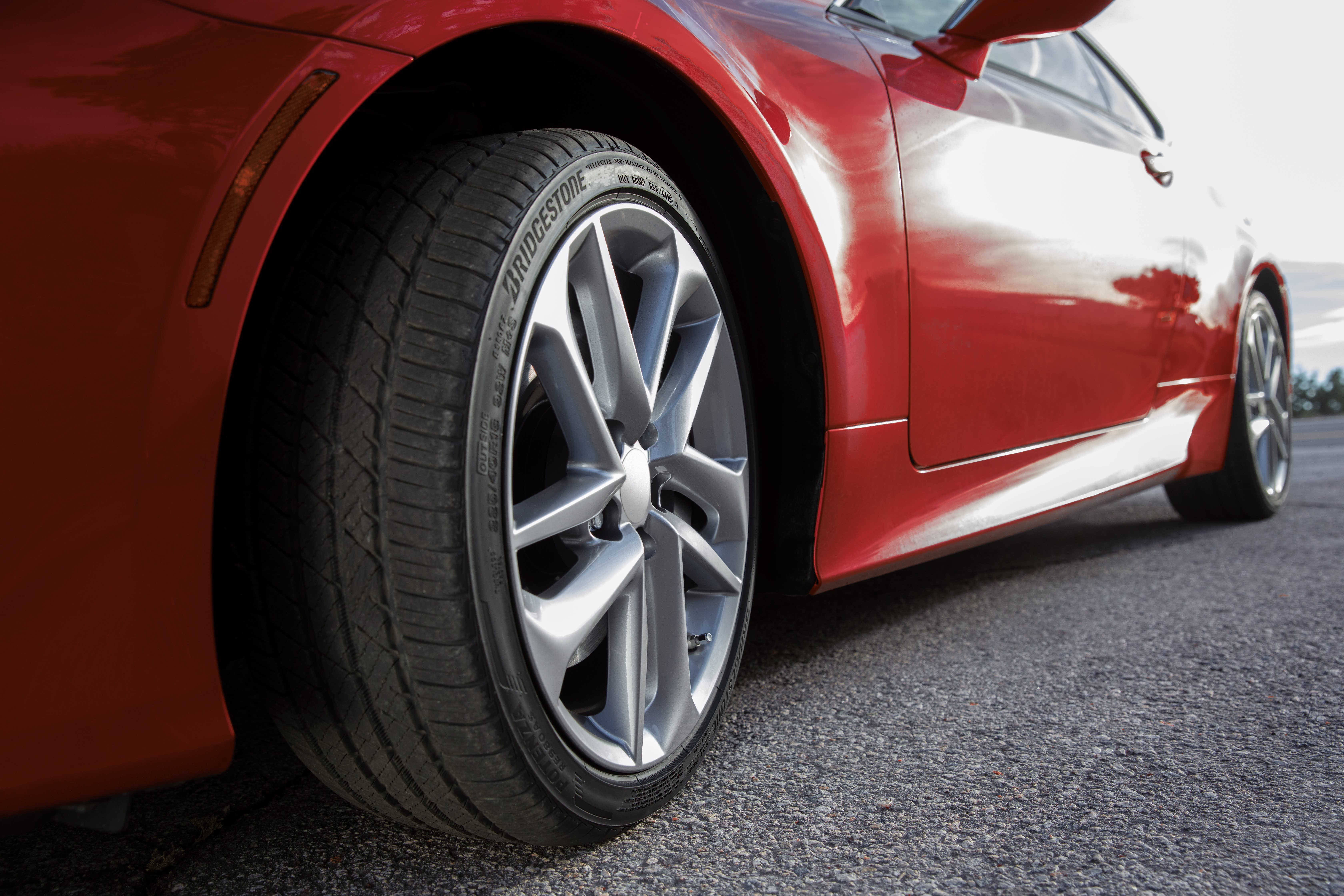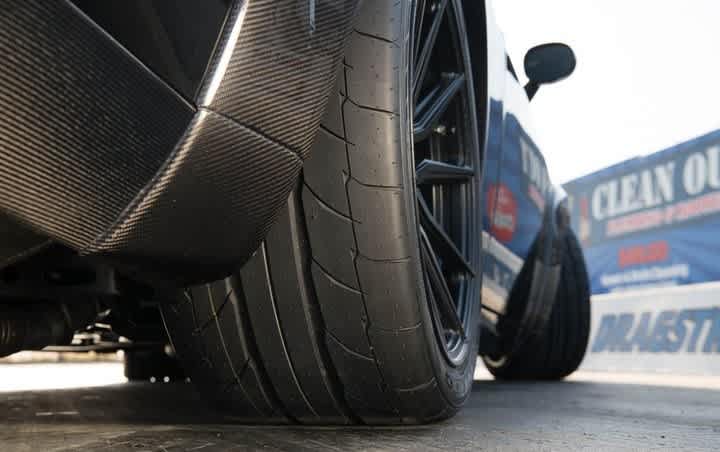Tire Buying Guides
Free shipping
Best price guarantee
Special pricing
Financing with Resolve
Easy returns

High-performance tires transform ordinary vehicles into precision driving machines through advanced engineering and specialized materials. These tires deliver superior grip, enhanced handling, and improved braking that standard tires simply cannot match.
The technology behind performance tires has evolved dramatically over the past decade. Modern compounds and construction methods now allow drivers to experience race-inspired performance on everyday roads while maintaining reasonable tire life and safety.
Selecting the right high-performance tire requires understanding the unique features that separate them from conventional options. This comprehensive guide breaks down everything from tire types and essential features to making smart purchasing decisions that match your driving style and budget.
What Are High-Performance Tires?
Definition and Purpose
High-performance tires represent a significant upgrade from standard passenger tires in both design philosophy and real-world capability. These specialized tires utilize advanced rubber compounds—often incorporating silica and special polymers—that maintain optimal flexibility across a wider temperature range while providing exceptional road contact. The engineering behind these tires focuses on maximizing the contact patch: the critical area where rubber meets road.
The construction differs fundamentally from regular tires through reinforced internal structures and optimized tread patterns. Steel belts run at specific angles beneath the tread surface, while polyester or nylon overlays add stability at high speeds. This sophisticated architecture allows high-performance tires to safely handle speeds well beyond typical highway limits—with many rated for sustained speeds of 130 mph or higher. The sidewalls feature reduced flex zones that translate driver inputs directly to the road surface, creating the responsive feel that driving enthusiasts crave.
Key Differences from Standard Tires
The most noticeable distinction lies in the rubber compound itself: high-performance tires use softer, stickier formulations that generate more heat through friction. This heat actually helps the tire maintain its grip, but it also accelerates wear—expect to replace performance tires more frequently than standard all-seasons. The tread patterns tell another story entirely; where standard tires feature deep grooves and extensive siping for all-weather capability, performance tires minimize these elements to maximize rubber-to-road contact.
Physical dimensions also set performance tires apart from their conventional counterparts:
- Wider tread width: Performance tires typically measure 20-40mm wider than standard tires, creating a larger footprint for improved traction
- Lower aspect ratios: Sidewall heights of 55% or less reduce flex and improve steering response
- Larger rim diameters: Most performance applications start at 17 inches, with many reaching 20 inches or larger
- Asymmetric designs: Different tread zones handle specific tasks—inside edges for water evacuation, outside shoulders for cornering grip
The internal construction employs multiple technologies working in harmony. Spiral-wrapped nylon overlays prevent tire growth at high speeds, while varied rubber compounds across the tread face optimize performance in different driving scenarios. Even the tread blocks themselves feature unique shapes and angles calculated through computer modeling to provide progressive grip as cornering forces increase.
Types of High-Performance Tires

Summer Tires
Summer tires thrive in warm conditions, crafted with rubber compounds that enhance grip above 40°F. They provide excellent traction on both dry and wet roads through simplified tread designs that maximize road contact. Ideal for hot weather driving, these tires ensure precise handling and stability. However, they lose effectiveness in winter conditions due to their temperature-sensitive compounds.
Ultra-High-Performance (UHP) All-Season Tires
UHP all-season tires are a versatile choice for drivers seeking year-round sporty handling. They perform well across various weather conditions, including light snow, offering a balanced compromise between dry performance and adaptability. These tires feature tread patterns designed to provide traction in diverse environments, making them a popular option for those who prefer not to switch tires seasonally.
Ultra-High-Performance (UHP) Tires
Ultra-High-Performance (UHP) tires stand at the forefront of performance innovation, tailored for sports cars and powerful vehicles. They deliver outstanding grip and handling, with advanced tread designs and rubber compounds that excel in cornering and braking. With speed ratings often reaching W (168 mph) or higher, UHP tires cater to drivers seeking top-tier responsiveness and control. Their construction includes reinforced sidewalls and advanced materials to maintain stability at high speeds.
Essential Features to Look For
Tread Pattern and Design
High-performance tires excel through specialized tread patterns that enhance both safety and control. Unique patterns divide the tire into sections, each serving a distinct function. The inner grooves focus on channeling water away, reducing hydroplaning risks, while the outer blocks enhance grip during turns, ensuring stability.
Minimizing siping is another hallmark of these tires. This approach maintains tread rigidity, ensuring immediate response to steering inputs. The result is enhanced contact with the road, crucial for traction at high speeds.
Rubber Compound Technology
The compounds in high-performance tires are crafted using innovative technologies to deliver peak performance. Silica-infused formulas boost wet traction while maintaining tire longevity. These compounds ensure the tire remains flexible, offering consistent grip and control across various conditions.
Temperature-resistant materials prevent overheating during intense driving, with polymers designed for flexibility in different climates. Advanced manufacturing processes ensure these benefits persist throughout the tire's life, providing reliable performance from start to finish.
Speed and Load Ratings
Understanding speed and load ratings is key when choosing high-performance tires. Speed indicators like H (130 mph), V (149 mph), W (168 mph), and Y (186 mph) confirm the safe speed limits a tire can manage. These ratings ensure the tire can endure high-speed demands without safety compromises.
Load index shows the weight capacity per tire, with higher ratings indicating robust construction for stability. Adhering to or exceeding your vehicle’s specifications ensures optimal performance and safety.
Benefits of High-Performance Tires

Enhanced Vehicle Control
High-performance tires offer a transformative driving experience by enhancing precision in steering and providing exceptional stability at high speeds. The advanced construction minimizes body roll during cornering, ensuring a smooth and secure ride. These tires are engineered for optimal braking performance, allowing for quick and effective stopping on dry surfaces.
Superior Traction and Grip
Experience unparalleled grip with high-performance tires, designed to maximize road contact and deliver superior acceleration. Their innovative tread patterns enhance lateral stability, providing confidence while navigating sharp turns. In wet conditions, these tires excel by efficiently channeling water away, reducing the risk of hydroplaning and maintaining consistent traction.
Driving Experience Improvements
High-performance tires deepen the connection between driver and road, offering a responsive and engaging ride. With increased feedback, drivers gain confidence in various driving scenarios, tackling different terrains with ease. The tires' quick response to inputs enhances vehicle dynamics, making every journey more enjoyable and precise.
Choosing the Right High-Performance Tires for Your Vehicle
Understanding Your Driving Needs
Selecting the ideal high-performance tires starts with a clear assessment of your driving patterns and local climate. Reflect on the types of roads you navigate daily—whether urban, rural, or mountainous. Weather conditions, such as frequent rain or occasional snow, should influence your choice. Prioritize what matters most to you: nimble handling, a comfortable ride, or extended tire life. Consider your driving habits—do you enjoy aggressive driving or prefer leisurely trips? Your yearly mileage and tire replacement habits also play a role in your decision.
Vehicle Compatibility Considerations
Compatibility with your vehicle is essential for optimal tire performance. Begin by reviewing your vehicle’s handbook for the specified tire dimensions and standards. The power and weight of your vehicle inform the selection of appropriate load and speed ratings. If considering wider tires for better grip, ensure there is sufficient clearance to prevent any contact with the vehicle’s body or suspension. Aligning tires with your vehicle’s specifications guarantees both safety and enhanced driving satisfaction.
Budget and Value Analysis
Understanding the financial aspects is crucial when choosing high-performance tires. Evaluate the upfront cost against the projected lifespan to gauge long-term value. Performance tires can influence fuel efficiency, impacting overall expenses. If opting for summer-specific tires, consider the potential costs of seasonal swaps. Explore resources like tire buying guides to identify options that deliver the best blend of performance and affordability.
Top Performance Features by Driving Condition

Dry Weather Performance
In dry conditions, high-performance tires enhance driving precision with a focus on maximizing traction. They employ continuous tread blocks that ensure stability and agility, allowing for precise maneuvering. This design facilitates swift acceleration and tight cornering, giving drivers a confident edge on the road.
Innovative rubber formulations resist temperature-induced wear, maintaining optimal grip. These compounds are crafted to handle the heat generated during spirited driving, ensuring consistent performance without compromising control or safety.
Wet Weather Capabilities
High-performance tires maintain their prowess in wet conditions through specialized designs. Channels and grooves effectively disperse water, minimizing the risk of hydroplaning and maintaining steadfast contact with the road. This design ensures stability and confidence, even in heavy rainfall.
Advanced rubber blends retain flexibility in wet environments, offering enhanced traction and reduced braking distances. The strategic tread patterns cut through water, ensuring safety and control, providing a secure driving experience in adverse weather.
Temperature Adaptability
Adaptability to temperature changes is a key feature of high-performance tires. Summer tires excel in warmer climates, delivering peak performance when temperatures rise. However, their grip diminishes in colder weather, making climate consideration crucial.
UHP all-season tires accommodate broader temperature fluctuations, offering a balanced performance in diverse climates. These tires adapt to varying conditions, ensuring reliable driving throughout the year, regardless of the season.
Making Your High-Performance Tire Purchase
Where to Buy Quality Performance Tires
Explore digital marketplaces like SimpleTire to access a broad array of performance tires, offering detailed product insights and customer ratings. SimpleTire can help you compare specifications and find options tailored to your needs.
Installation and Maintenance Tips
Ensure your tires are fitted by qualified technicians who can guarantee accurate mounting and balancing, critical for performance tires. Routine rotation, typically between 5,000 and 7,000 miles, helps maintain even tread wear and prolongs tire life.
Consistently check tire pressure to maintain peak performance and safety. Regular wheel alignment checks are vital for preserving tire integrity and ensuring smooth handling, particularly after noticing any shifts in driving dynamics.
Getting the Most Value
Look for promotions on high-performance tires during peak sales periods to secure excellent deals. Purchasing a complete set of tires ensures consistent performance and handling characteristics across your vehicle.
Consider the advantages of warranties and protection plans for added security. Opt for sellers like SimpleTire that provide perks and installation services to maximize the value of your investment.
High-performance tires represent a significant investment in your driving experience, transforming everyday commutes into engaging journeys while providing the safety and control you need. The right set of performance tires matched to your vehicle and driving style will deliver years of confident, responsive handling that makes every mile more enjoyable. Ready to upgrade your ride? Shop for tires online and find the best deals – we make it simple to find the perfect high-performance tires for your vehicle.
Ready to find the perfect tires?
Search By